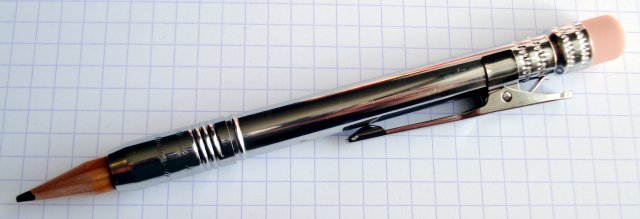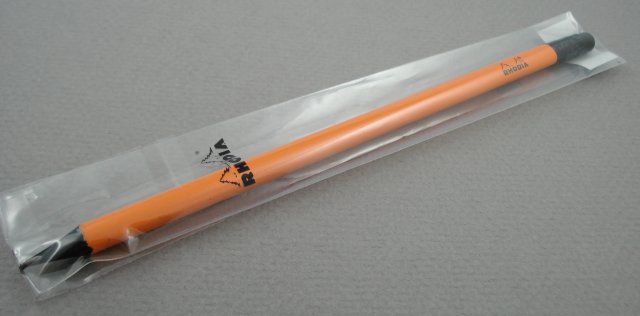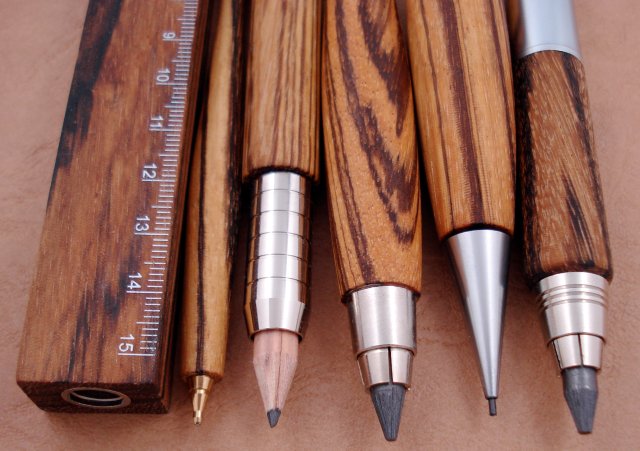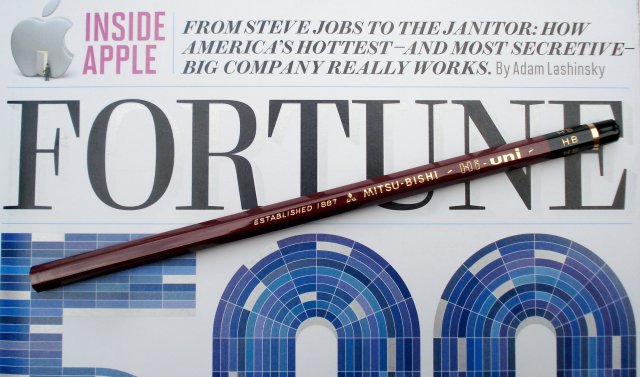Moleskine has slowly been unveiling a new collection from designer Giulio Iachetti. Included in the collection is a pencil!
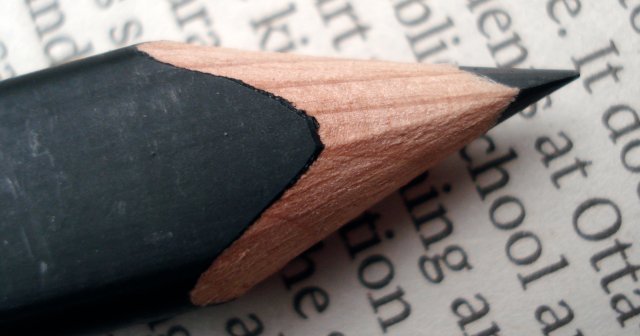
The pencils I obtained came in cardboard and plastic packaging. There was no simple way to open the package that I could determine, so I used kitchen scissors.
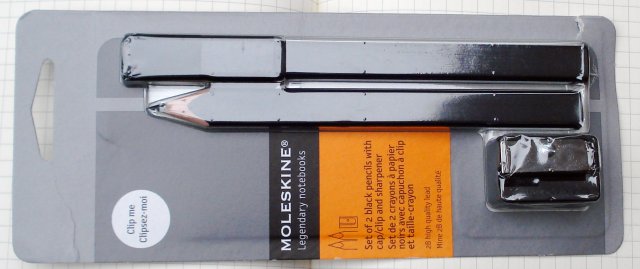
The set includes two pencils, a sharpener, a clip, and a set of stickers.
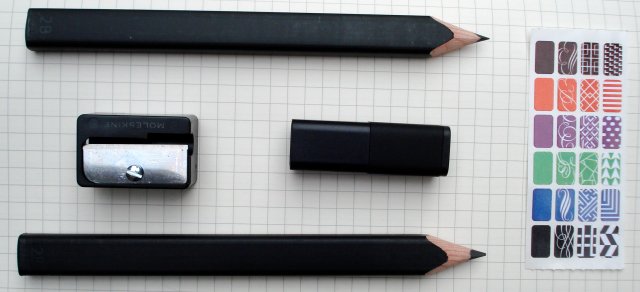
The pencils are very handsome, finished in matte black, including a finished rounded cap. The shape is not what I was expecting – the 13cm long pencils have a rectangular carpenter pencil format, though the lead is a standard cylindrical shape.
The packaging indicates the pencils are from the Czech Republic, the wood cedar (which should be clear from the photos) and the lead a 2B grade.
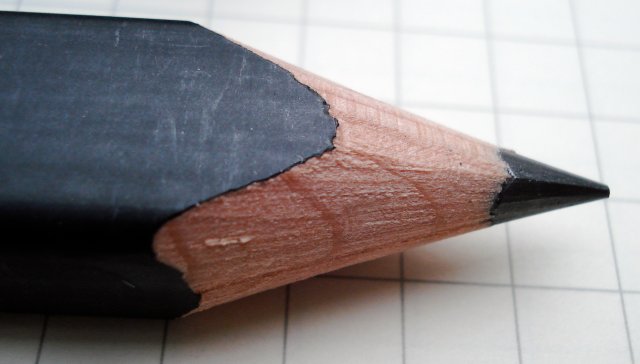
The markings are a subtle black on black. “Moleskine” on the narrow side:
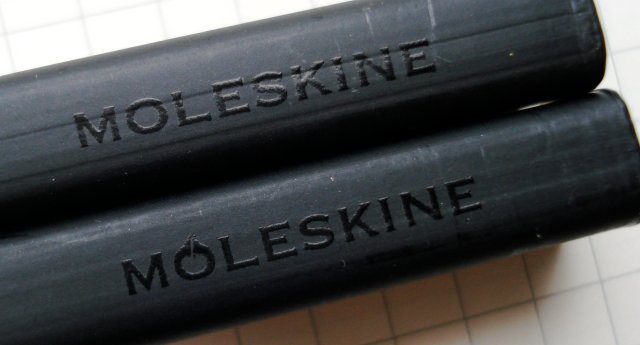
And the grade on the wide side:
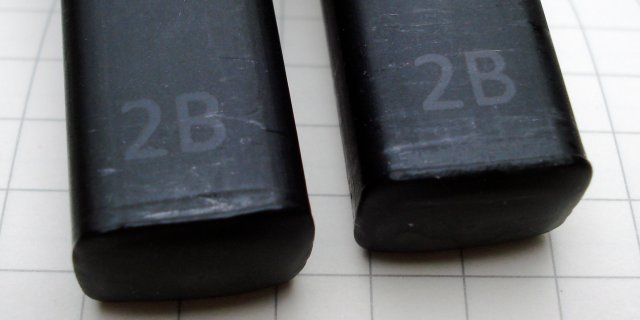
An impressive product. I was recently speculating with an online friend that interesting new pencils are going to start coming from third parties and virtual brands, rather than the manufacturers. And the Moleskine seemed like a perfect example.
There is just one problem – with the smooth finish and rectangular shape, I couldn’t get a proper hold on the pencil. I tried various grip formations without success. Perhaps it takes some getting used to, but without forming an uncomfortable vice grip, I just couldn’t find a way of grasping the pencil for writing.
This was unfortunate, as the pencil has a great appearance and the lead seems to be high quality.
Unsatisfactory (to me) broken letter formations when my hand lost grip on the pencil:

The sharpener is quite different. Do you see what I mean? You may want to compare with a standard sharpener:
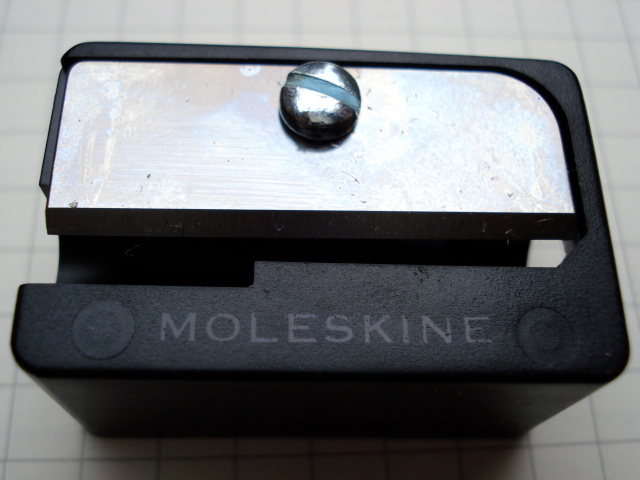
The blade is flush with the top of the sharpener, so the pencil will have to be inserted at an angle. Different, though I’m not sure about the impact on usability. The pencil set was sufficiently expensive that I didn’t want to sharpen the pencils just to test how they sharpen.
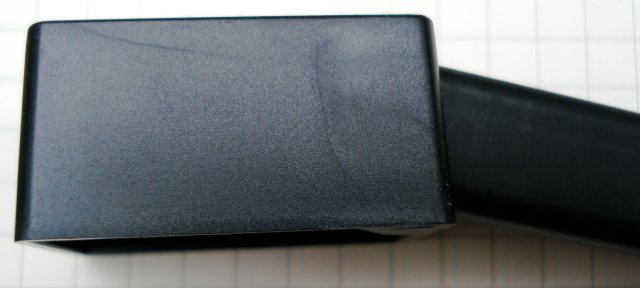
The cap is interesting. It grips the pencil with a friction fit, and has an interior plastic piece to ensure point protection. The cap is surrounded by a rubberized metal clip.
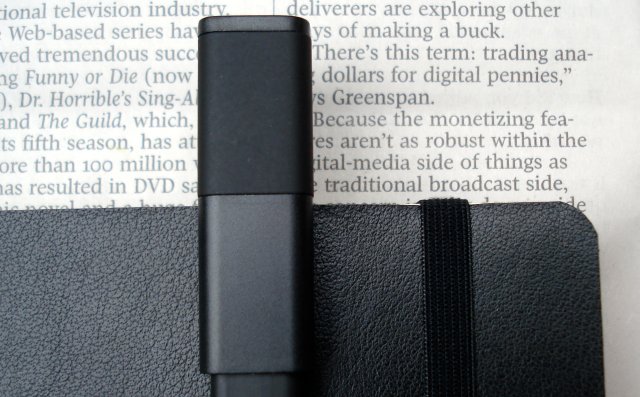
To me, it looks great, but official photos show the pencil being clipped to the side of a Moleskine, rather than the top.
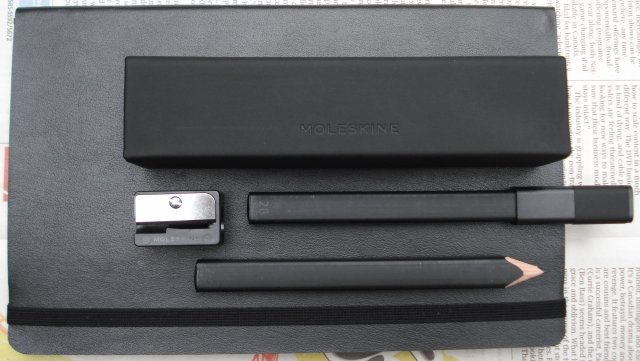
It is great to see the introduction of a compelling pencil set with really sharp looks, but I am torn about the usability question. I am curious about what others think – have you tried the Moleskine pencil?
